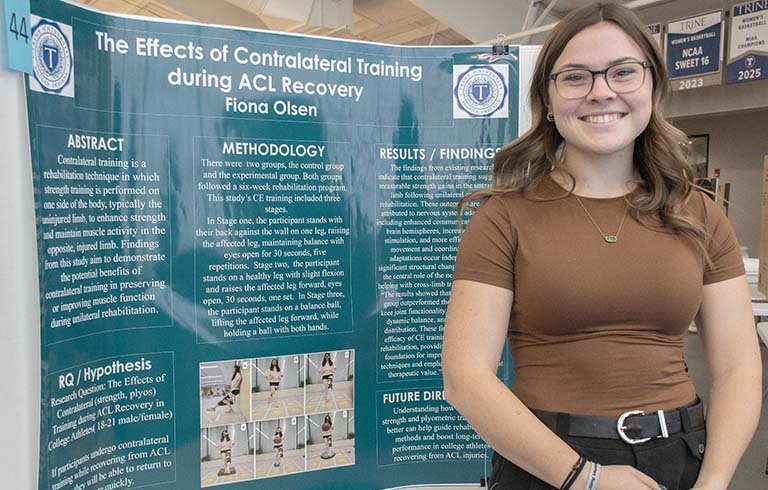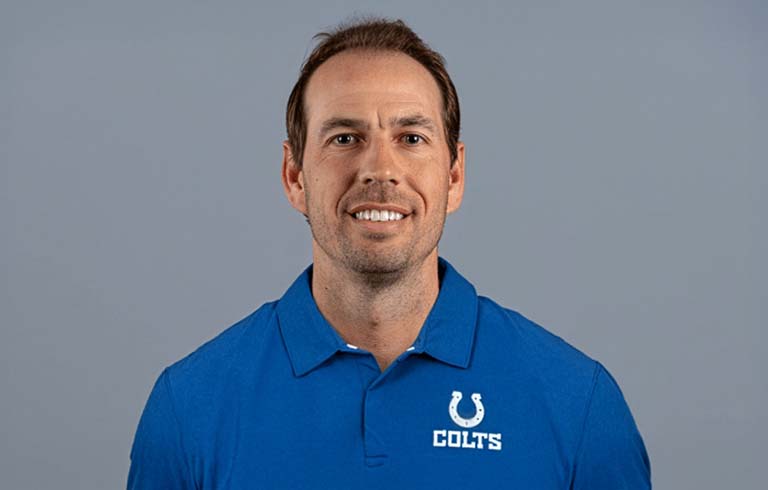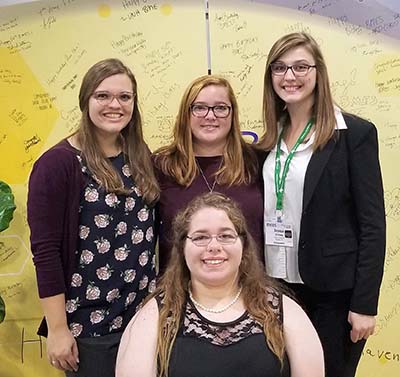 Four Trine University biomedical engineering students presented posters at the Biomedical
Engineering Society (BMES) Annual Meeting in October.
Four Trine University biomedical engineering students presented posters at the Biomedical
Engineering Society (BMES) Annual Meeting in October.
The 50th annual meeting was held Oct. 17-20 at the Georgia World Congress Center in Atlanta.
Jessa Crites, a senior from Westfield, Indiana, Erika Kasen, a senior from Hudsonville,
Michigan, Allison McCrady, a senior from Lancaster, Ohio, and Emily Clark, a junior
from Forest, Ohio, participated in the event.
Kasen, Crites and Clark presented posters from their Research Experiences for Undergraduates
(REUs) conducted over the summer. Kasen’s was titled, “User Biomechanics of Exoskeleton-Assisted
Gait,” Crites’ was “Development of Miniaturized Syn-Bio Based Redox Capacitor to Electrochemically
Measure Autoinducer Molecules,” and Clark’s was "Estimation of Knee Ligament Slack
Lengths Considering Registration Error."
For her REU, Kasen worked in a computational biomechanics lab and used a MATLAB program
to analyze motion capture data to find mechanical results, including knee angles and
movements, of chronically injured patients walking with an exoskeleton. The goal of
the research is to determine how mechanical concepts can apply to, and affect, the
body, she said.
“Exoskeleton walking is on the cutting edge of rehabilitation engineering,” she said.
Clark worked as a rehabilitation engineering research Intern at Cleveland State University
during the summer of 2018. She supported graduate research into the structural response
of human knees by coding in the Python programming language to collect and analyze
data regarding knee ligament slack lengths due to registration error.
“Registration is what we call the process that relates the position of the bones (femur
and tibia in this case) in the experiment to the position of the bones in our 3D simulation,”
she said. “If we have errors in our registration, then the bones are in an incorrect
orientation in the simulation.”
She said the end goal of the research is to improve biomedical devices such as joint
implants —specifically for knees — and the surgical implantation procedures performed
by surgeons.
Kasen and McCrady also presented a poster covering their honors project, “Ultrasound-Based
Observations of Apparent Achilles Tendon Shortening.” For their project, the duo took
ultrasound images to measure strain on the Achilles tendon.
“The results were basically counter-intuitive because you would think as you point
your toe the Achilles tendon would lengthen, but we found the opposite,” said McCrady.
“The reasons for this are still unclear, and other groups are seeking to determine
why this is happening in the body.”
Research in this area hopes to aid in injury prevention, Kasen said.
The students said being able to present at the meeting helped them grow professionally
and network with others in the field.
“BMES was a great opportunity to be exposed to many graduate schools, graduate-level
research presentations and other exceptional undergraduate peers, and engage in technical
dialogue while presenting,” said Kasen.
“It was an honor to present my research,” Clark said. “This opportunity greatly increased
my confidence and widened my horizons for my potential and what the future has to
offer.”
Photos: Top, Emily Clark with her research poster, “Estimation of Knee Ligament Slack Lengths
Considering Registration Error,” at the Biomedical Engineering Society Annual Meeting.
At right, from left, Erika Kasen, Allison McCrady, Jessa Crites and, in front, Emily
Clark.
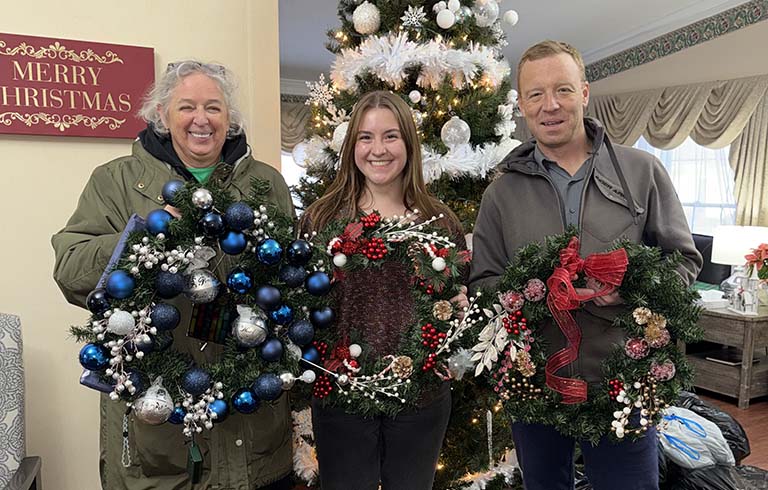
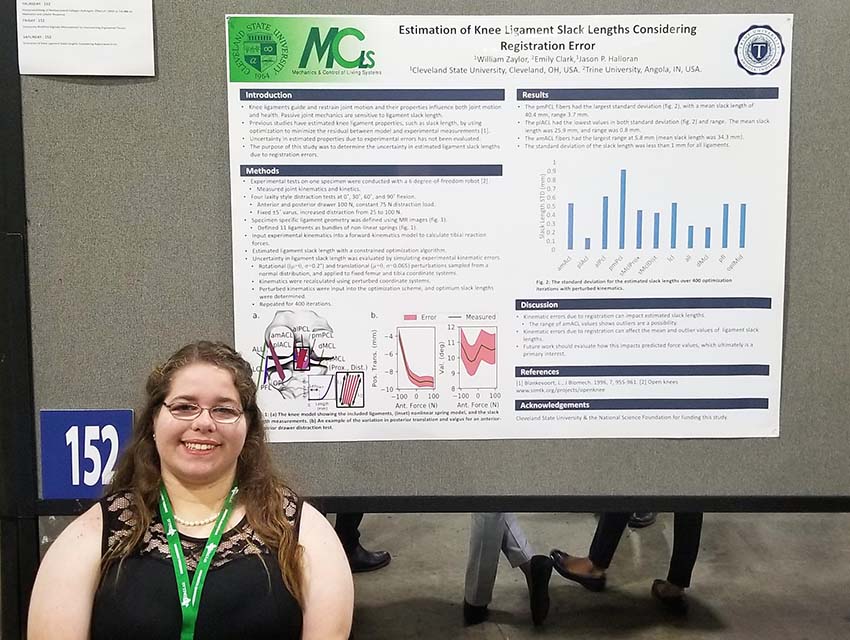
 Four Trine University biomedical engineering students presented posters at the Biomedical
Engineering Society (BMES) Annual Meeting in October.
Four Trine University biomedical engineering students presented posters at the Biomedical
Engineering Society (BMES) Annual Meeting in October.